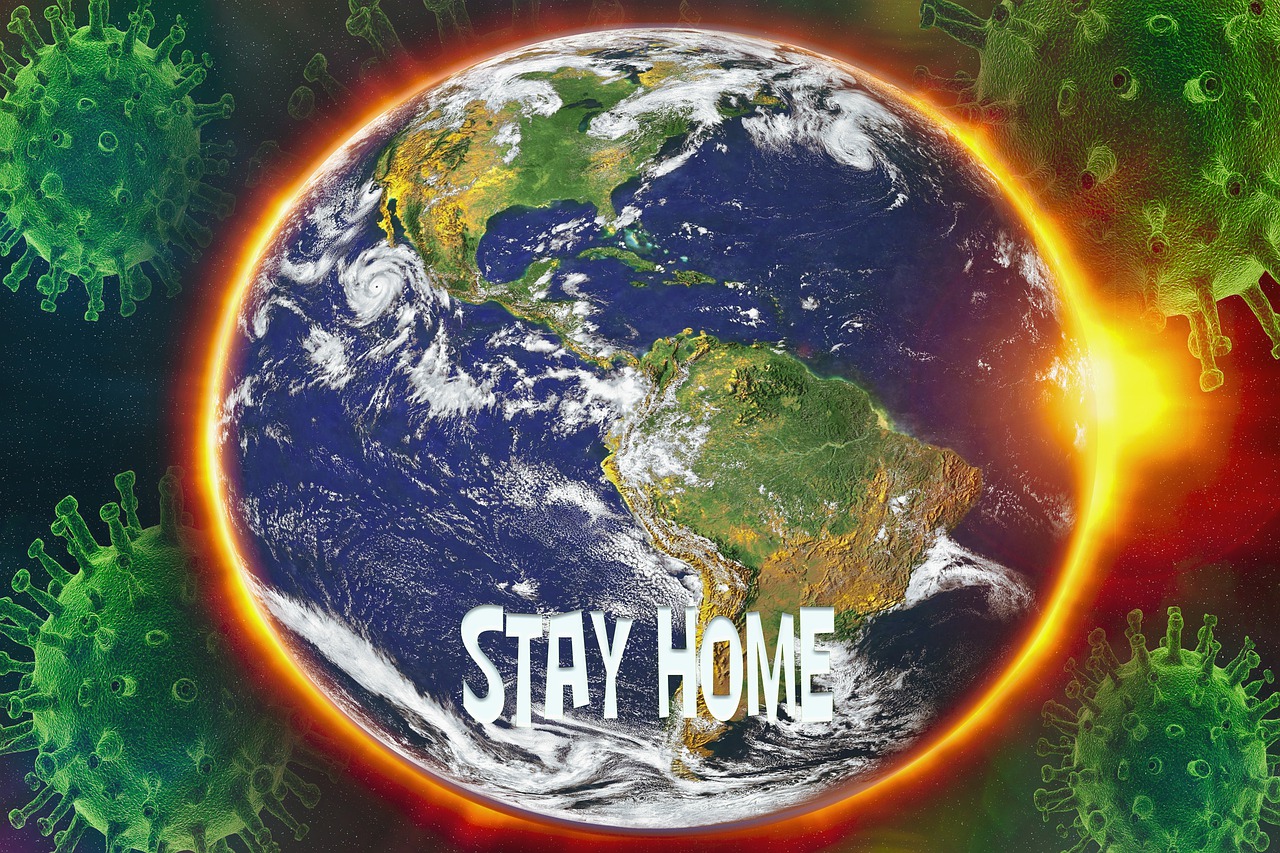Stagnant water might seem harmless, but lurking beneath its still surface are hidden health risks that can catch anyone off guard. Picture a forgotten puddle or an abandoned pond. While they may appear tranquil, these stagnant environments can become breeding grounds for various harmful organisms and pathogens. Whether you’re enjoying the great outdoors or simply relaxing in your backyard, it’s essential to be aware of what those seemingly innocent pools of water could mean for your health. Let’s dive into the dangers that stagnant water presents and why you should take notice before it’s too late.
Vector-Borne Diseases
It is crucial to refer to a practical guide to water safety because stagnant water creates a perfect habitat for mosquitoes and other pests. These insects are notorious for spreading vector-borne diseases, which can have serious health implications. When mosquitoes breed in still water, they carry viruses like West Nile or Zika. A simple bite can lead to fever, headaches, or even more severe complications. The risk increases during warmer months when mosquito populations surge. Beyond mosquitoes, stagnant environments can harbor ticks as well. Ticks thrive in damp areas and transmit Lyme disease through their bites. This often leads to fatigue and joint pain if untreated.
Waterborne Pathogens

Stagnant water can be a breeding ground for harmful pathogens. These microscopic organisms thrive in still environments, posing significant health risks. Bacteria like E. coli and Salmonella are often found in contaminated waters. These germs can cause severe gastrointestinal issues if ingested. Just a sip of tainted water may lead to days of discomfort. Viruses also lurk in stagnant pools. Norovirus and Hepatitis A are notorious for spreading through unclean water sources.
Harmful Algal Blooms
Harmful algal blooms (HABs) are a troubling phenomenon, often linked to stagnant water. These vibrant green patches can look picturesque, but they hide serious dangers. When conditions like warm temperatures and nutrient overload occur, algae thrive unchecked. Some species produce toxins that contaminate drinking water and affect aquatic life. Fish and shellfish exposed to these toxins can be dangerous for humans who consume them. Swimmers aren’t safe either; exposure can lead to skin irritations or respiratory issues. In some regions, beaches may close due to the presence of toxic blooms.
Fungal Infections

Fungal infections thrive in stagnant water, creating a perfect breeding ground for various fungi. These microorganisms can enter the body through cuts, abrasions, or even inhalation. Common symptoms often include rashes, itching, and respiratory issues. Some species can cause serious conditions like histoplasmosis or aspergillosis. Individuals with weakened immune systems are particularly vulnerable. The presence of damp environments increases the risk of exposure. It’s crucial to be cautious around standing water bodies such as ponds or puddles after a rainstorm. Preventative measures include wearing protective clothing and avoiding contact with contaminated areas.
Stagnant water may seem harmless at first glance, but it often conceals a host of potential dangers. From vector-borne diseases like West Nile virus to the unsettling presence of harmful algal blooms, the risks are real and widespread. Your health matters, so pay attention to where you tread. The next time you encounter still waters, think twice before getting too close; it just might save you from an unpleasant surprise down the line.…





 It’s never easy to hear that something you’re going through is caused by something that happened to you in the past. For people with bipolar disorder, this myth can be particularly harmful. The idea that bipolar disorder is caused by childhood trauma can lead to feelings of guilt and shame.
It’s never easy to hear that something you’re going through is caused by something that happened to you in the past. For people with bipolar disorder, this myth can be particularly harmful. The idea that bipolar disorder is caused by childhood trauma can lead to feelings of guilt and shame.


 Whenever you want to get testosterone boosters, make sure to consult with your doctor. You need to know the level of your testosterone. You can take some natural boosters such as eggs, honey, ginseng, and Tongkat Ali if it’s not that low. But, if it’s deficient, you can choose to get other testosterone boosters.
Whenever you want to get testosterone boosters, make sure to consult with your doctor. You need to know the level of your testosterone. You can take some natural boosters such as eggs, honey, ginseng, and Tongkat Ali if it’s not that low. But, if it’s deficient, you can choose to get other testosterone boosters. Buying testosterone booster supplements is not something that you can take it easy. You need to check the labels. By checking the labels, you can find out the ingredients, possible side effects, and user suggestions. See if there are ingredients that you should avoid as you may have allergies to that. It’s as mentioned in my first tip above. Although the products have got FDA approval, it doesn’t mean that it’s safe for you. It’s as you may have specific allergies to the chemical compounds of the products. So, do your research, check each ingredient on Google.
Buying testosterone booster supplements is not something that you can take it easy. You need to check the labels. By checking the labels, you can find out the ingredients, possible side effects, and user suggestions. See if there are ingredients that you should avoid as you may have allergies to that. It’s as mentioned in my first tip above. Although the products have got FDA approval, it doesn’t mean that it’s safe for you. It’s as you may have specific allergies to the chemical compounds of the products. So, do your research, check each ingredient on Google.
 As hormones decline in the years leading up to menopause, female libido can go south as well. But lack of appetite isn’t just a problem for older women: according to a national survey of 1,000 women, many women in their 30s and 50s also suffer from a lack of lust. Certain medications, such as antidepressants, are also libido culprits, as are hormonal contraceptives.
As hormones decline in the years leading up to menopause, female libido can go south as well. But lack of appetite isn’t just a problem for older women: according to a national survey of 1,000 women, many women in their 30s and 50s also suffer from a lack of lust. Certain medications, such as antidepressants, are also libido culprits, as are hormonal contraceptives. Pain during sex can be caused by vaginal dryness, or it may be an indication of a medical problem, like ovarian cysts. This condition can also be associated with vaginismus, a condition in which the vagina tightens involuntarily when penetrated. If you are experiencing those conditions, you should better talk to your healthcare provider.
Pain during sex can be caused by vaginal dryness, or it may be an indication of a medical problem, like ovarian cysts. This condition can also be associated with vaginismus, a condition in which the vagina tightens involuntarily when penetrated. If you are experiencing those conditions, you should better talk to your healthcare provider.
 A procedure trainer is a superior alternative if you want a fantastic aerobic exercise. It’s found in virtually every gym and house due to the immense number of advantages. It’s comfortable workout gear with the best characteristics and requires very little maintenance. A treadmill provides your system with a fantastic exercise that will burn more fat and calories by simply walking or running or running on the treadmill in great intensity.
A procedure trainer is a superior alternative if you want a fantastic aerobic exercise. It’s found in virtually every gym and house due to the immense number of advantages. It’s comfortable workout gear with the best characteristics and requires very little maintenance. A treadmill provides your system with a fantastic exercise that will burn more fat and calories by simply walking or running or running on the treadmill in great intensity. The exercise bike is among the most favored aerobic exercise gear, and it’s quite simple to use as it’s a user-friendly workout machine. You’re very likely to come across pre-programmed exercises and routines on the exercise bicycle. You could think about the exercise bicycles and aerobic equipment dependent on the durability, customer friendliness, costs, and customer testimonials you may attempt.
The exercise bike is among the most favored aerobic exercise gear, and it’s quite simple to use as it’s a user-friendly workout machine. You’re very likely to come across pre-programmed exercises and routines on the exercise bicycle. You could think about the exercise bicycles and aerobic equipment dependent on the durability, customer friendliness, costs, and customer testimonials you may attempt.




 First, we need to look at what exactly a vegetarian is. The great news for cats is that, unlike them, they don’t need certain nutrients that they could only get from beef. This means that theoretically, they could eat a puppy food consisting mainly of beans, legumes, milk, pulses, vegetables, fruits, and nuts. Some dogs will never change and may want to eat meat-based diets long term.
First, we need to look at what exactly a vegetarian is. The great news for cats is that, unlike them, they don’t need certain nutrients that they could only get from beef. This means that theoretically, they could eat a puppy food consisting mainly of beans, legumes, milk, pulses, vegetables, fruits, and nuts. Some dogs will never change and may want to eat meat-based diets long term. You can’t just feed a puppy any
You can’t just feed a puppy any  You can also choose ethically produced meat foods for your dog if they cannot adapt to vegetarian pet foods. This will help reduce the negative impact of your pet’s food on the environment. In that time, I have seen countless instances of dogs eating reduction dog food or one of the brands seen endlessly in TV commercials. With vegan diet you can keep your pet live long.…
You can also choose ethically produced meat foods for your dog if they cannot adapt to vegetarian pet foods. This will help reduce the negative impact of your pet’s food on the environment. In that time, I have seen countless instances of dogs eating reduction dog food or one of the brands seen endlessly in TV commercials. With vegan diet you can keep your pet live long.…













 To date, there is no evidence that pets or breeding animals can transmit the disease. The World Health Organization (WHO) states that there is no evidence that pets or domestic animals can contract the virus or infect animals or humans with the coronavirus (COVID-19). Health authorities in Hong Kong have described this incidence as a case of human to animal transmission. They announced that visitors can’t infect humans, so people do not have to worry about this incidence.
To date, there is no evidence that pets or breeding animals can transmit the disease. The World Health Organization (WHO) states that there is no evidence that pets or domestic animals can contract the virus or infect animals or humans with the coronavirus (COVID-19). Health authorities in Hong Kong have described this incidence as a case of human to animal transmission. They announced that visitors can’t infect humans, so people do not have to worry about this incidence.



 It’s effortless to become lazy and sedentary once you don’t leave your home daily. However, it is particularly important to stay active during the weeks and days when you’re learning online. If you play a game, go for a stroll, perform some at-home workouts, be confident you’re moving throughout the day. Staying active can allow you to concentrate more when you sit down to work. However, it’s also great for emotional health and stress control. Whether you’ve got a specific time set aside to exercise or attempt to work it in your day whenever possible, staying busy is a vital part of managing anxiety when taking online courses.
It’s effortless to become lazy and sedentary once you don’t leave your home daily. However, it is particularly important to stay active during the weeks and days when you’re learning online. If you play a game, go for a stroll, perform some at-home workouts, be confident you’re moving throughout the day. Staying active can allow you to concentrate more when you sit down to work. However, it’s also great for emotional health and stress control. Whether you’ve got a specific time set aside to exercise or attempt to work it in your day whenever possible, staying busy is a vital part of managing anxiety when taking online courses.
 Having a stoma requires many services to alleviate the discomfort. Wearing an ostomy stealth belt, and then you may have received a significant amount of movement in protecting your ostomy or stoma from other debilitating stress. You may not be able to resist a garment and the objects you interact with. Considering that the ostomy belt was created to provide incredible protection in most fashion protective measures, it is an excellent shield in the workplace.
Having a stoma requires many services to alleviate the discomfort. Wearing an ostomy stealth belt, and then you may have received a significant amount of movement in protecting your ostomy or stoma from other debilitating stress. You may not be able to resist a garment and the objects you interact with. Considering that the ostomy belt was created to provide incredible protection in most fashion protective measures, it is an excellent shield in the workplace.




 Other medical treatments help prevent smoking. Alternative medicine specialists can prescribe meditation and herbal supplements and drinks that can help control nicotine cravings. Meditation is a practice that calms the body and mind, diverting attention from oneself and the desire for nicotine. The deep breathing processes that occur in many meditation exercises effectively provide the body with oxygen and relieve stress and anxiety, so you are less inclined to look for a soft stick.
Other medical treatments help prevent smoking. Alternative medicine specialists can prescribe meditation and herbal supplements and drinks that can help control nicotine cravings. Meditation is a practice that calms the body and mind, diverting attention from oneself and the desire for nicotine. The deep breathing processes that occur in many meditation exercises effectively provide the body with oxygen and relieve stress and anxiety, so you are less inclined to look for a soft stick.


 It is extremely important to find ways to maintain a schedule at the gym, as gyms and fitness centres have interrupted all our training routines. Take this opportunity to look at one of the questions and courses. Yoga and kickboxing are some of my favourite exercises, which you can find on the online gym website. Create a little space at the home place and plan time by taking steps to incorporate the routine you want to practice.
It is extremely important to find ways to maintain a schedule at the gym, as gyms and fitness centres have interrupted all our training routines. Take this opportunity to look at one of the questions and courses. Yoga and kickboxing are some of my favourite exercises, which you can find on the online gym website. Create a little space at the home place and plan time by taking steps to incorporate the routine you want to practice. Network technologies and platforms have seen an increase in customer participation. With over a billion estimated social media users before the COVID 19 pandemic, media user actions are likely to increase during the isolation period. Applications are used to target current and potential customers seeking occupational health and safety information.
Network technologies and platforms have seen an increase in customer participation. With over a billion estimated social media users before the COVID 19 pandemic, media user actions are likely to increase during the isolation period. Applications are used to target current and potential customers seeking occupational health and safety information.

 Forget about past accidents or mistakes and rule out anxieties of things about the future. When you adopt this strategy, you become more focused on the tasks at hand, more focused, and more effective overall. Meditation is very good for situations where you are stressed and would like to rest. It will help you feel calm if your company is going to hold a huge launch or has a great deal. Taking yourself from this moment to unwind makes a big difference in how you feel.
Forget about past accidents or mistakes and rule out anxieties of things about the future. When you adopt this strategy, you become more focused on the tasks at hand, more focused, and more effective overall. Meditation is very good for situations where you are stressed and would like to rest. It will help you feel calm if your company is going to hold a huge launch or has a great deal. Taking yourself from this moment to unwind makes a big difference in how you feel. When things become stressful, and your ideas begin to overwhelm you, simply focusing on your body helps. By focusing on your breath or simply by rubbing your palms together, you can break apart from negative ideas that are extreme. Attempt by concentrating on the way you’re feeling, to help focus on what is at hand. It will help shield yourself from thinking that is unhelpful.
When things become stressful, and your ideas begin to overwhelm you, simply focusing on your body helps. By focusing on your breath or simply by rubbing your palms together, you can break apart from negative ideas that are extreme. Attempt by concentrating on the way you’re feeling, to help focus on what is at hand. It will help shield yourself from thinking that is unhelpful.